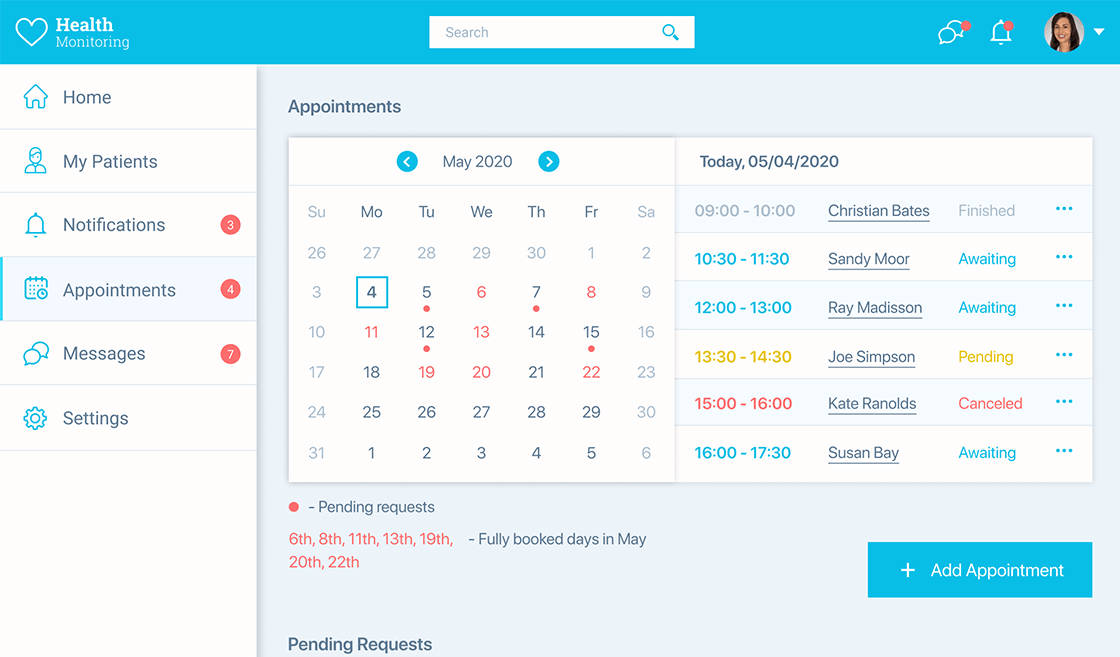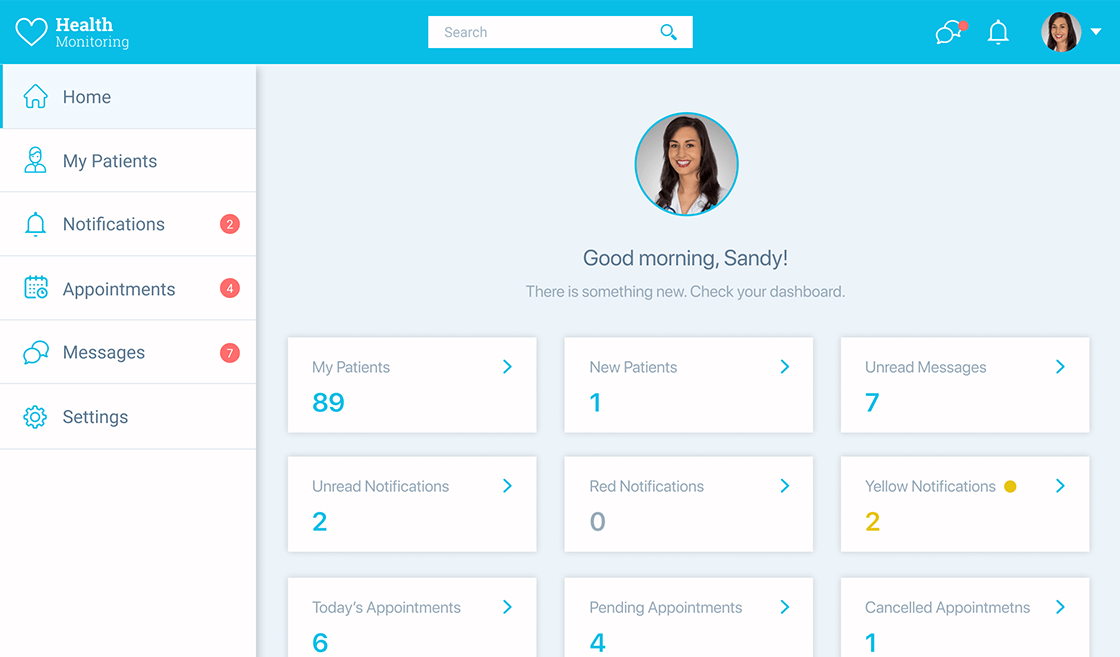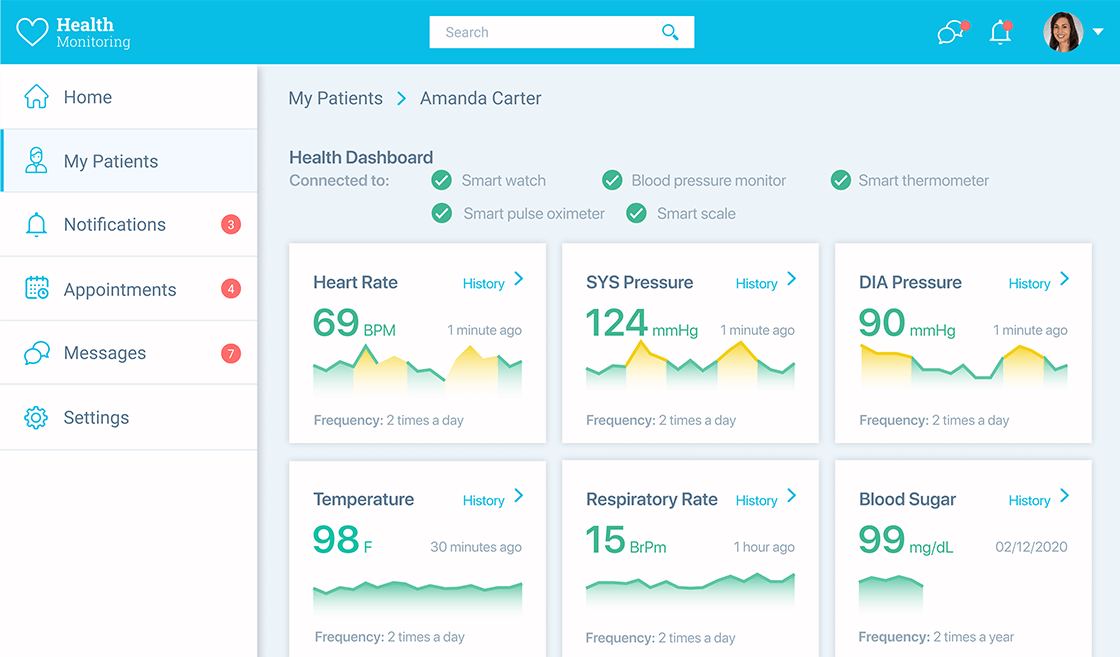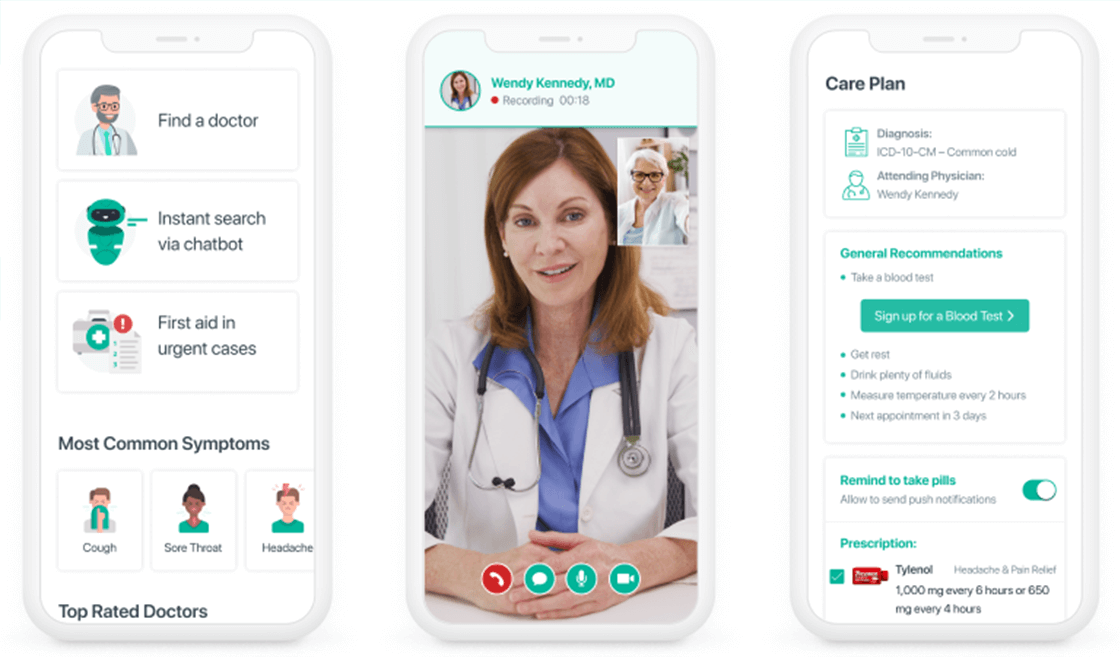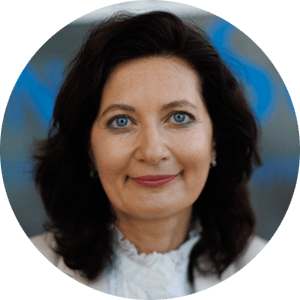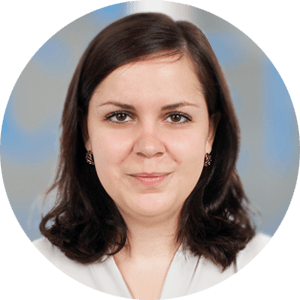Telemedicine App Development
Planning, Monetization Tips, Technologies, and Costs
With 150+ successful healthcare IT projects, ScienceSoft is your trusted guide and full-service partner for telemedicine app development. We excel in building HIPAA-compliant, user-centric telehealth software tailored to your needs.
Telemedicine Software Development in Brief
Telemedicine app development is aimed at building high-quality software for remote consultations and remote patient monitoring. With telehealth, healthcare providers improve care accessibility, health outcomes, patient engagement, and automate routine care management operations.
How to develop a telemedicine app in 7 steps
- Engineer functional and compliance requirements.
- Plan HIPAA-compliant SDLC.
- Plan milestones, budget, and risks.
- Design patient- and doctor-centered UIs.
- Develop back end and integrations with hospital systems.
- Develop role-specific user side.
- Get certifications (21 CFR 11, IEC 82304-1:2016).
The development of a telehealth app may take around 4-8 months. You will need a team comprising of a project manager, a business analyst, a regulatory consultant, UI and UX designers, front-end and back-end app developers, QA and DevOps engineers.
The development cost of a telemedicine app typically ranges from $150,000 to $250,000+. The exact cost depends on the telehealth software type, complexity, user roles, performance requirements, data storage capacity, integrations, etc. Get a tailored estimate of your project expenses with our free calculator.
Telemedicine Apps Market Overview
The current telemedicine market is estimated at $85.2 billion. Worldwide, the demand for telehealth grows, and, by 2032, the market is expected to reach $427.9 billion at a CAGR of 17.9%. It is no surprise considering that telemedicine helps effectively manage chronic and age-related conditions (e.g., mental health issues and neurological conditions). For healthcare providers, telehealth helps reduce care costs and tackle staff shortage while providing care to more patients.
To help healthcare organizations and software product companies leverage telehealth technology, ScienceSoft develops reliable applications tailored to the patients’ and providers’ needs.
Must-Have Telemedicine Software Features
A recognized developer of award-winning healthcare apps, ScienceSoft lists the key features for telemedicine platforms that are most frequently requested by our clients.
If you want your telemedicine software to stand out on the market, I recommend you to clearly identify your target niche and develop advanced functionality to cater to its needs. For example, some of the clients I work with opt for VR-based online therapy programs for neurological diseases or AI chatbots to guide patients through cognitive behavioral therapy.
Five Key Steps of Telemedicine App Development
Depending on a telemedicine application’s specific features and scale, the development plan steps and their duration may differ, some of them may overlap with each other.
Based on our 20 years of experience in healthcare IT, we present a generalized process ScienceSoft follows to deliver a telemedicine app.
1.
Telehealth app requirements engineering and software planning
During the initial stage, ScienceSoft performs:
- For product companies: Telemedicine app market and competitors research, target customers identification, and a telehealth app idea productization.
- For healthcare organizations: Business needs specification and telehealth software requirements elicitation.
- Listing and prioritizing telemedicine software features (e.g., symptom-based doctor search, real-time video communication between doctors and patients), creating user scenarios for patients, doctors, admins; for telehealth products – splitting features into subscription plans.
- Gathering compliance requirements for applicable regulations (e.g., HIPAA, HITECH) and standards.
- High-level integrations design (e.g., with EHR, website, HIE platform, Laboratory Information System), preliminary HIPAA-compliant software architecture design, tech stack selection, identification of needed software licenses.
- For telemedicine products: Customizations design – to define telehealth app capabilities allowing the customers to modify certain app modules.
- Preliminary budget planning.
The phase deliverables include:
- General telehealth software requirements specification.
- Telehealth app feature list.
- High-level telehealth app architecture design.
- Preliminary budget.
2.
Project planning
At ScienceSoft, this stage includes:
- Project scope identification.
- Software development life cycle model planning (e.g., Agile methodologies such as Scrum, Kanban, are effective for complex projects requiring team flexibility).
- Budget planning.
- Project schedule, iterations, milestones and KPI planning.
- Software development risk assessment and a risk mitigation plan design (covering such risks as delays in the development, third-party medical software integration issues, etc.).
- Assessment of the telehealth software usage risks (e.g., potential app misuse, risks to patients’ health) and mitigation plan design.
3.
UX and UI design
- UX design – identifying main user scenarios (e.g., video appointment scheduling, prescription renewal) and visualizing the core functionality of a telehealth application (e.g., patient-doctor messaging, vitals’ tracking), mapping convenient user journeys (for patients, physicians, nurses, administrators).
- UI prototyping – to visualize how the telehealth app will look.
- UI design – to create attractive graphic interface elements.
The phase deliverables include:
- UX wireframes.
- User interface design document (all screens, assets, and source files).
To develop the telehealth software faster, ScienceSoft often runs the UX and UI design stage simultaneously with the project planning stage.
4.
App development and launch
- Back-end and front-end development to create the app's server and user sides.
- Testing (in parallel with development) to verify the app's functional behavior, usability, stability, security, and compliance.
- Risk revision: addressing new software usage risks and updating the risk mitigation plan.
- Revision of telehealth software documentation (in case of changed requirements).
- Certification according to relevant standards: e.g., 21 CFR 11 for apps featuring e-prescriptions, IEC 82304-1:2016 for apps integrated with medical sensors or devices.
- A pilot roll-out to present the app to a focus group, gather feedback, and improve accordingly.
- Telehealth app launch.
For early stakeholder or market validation, we usually start with an MVP. ScienceSoft builds core telehealth app functionality, then adjusts the MVP and prioritizes secondary features based on the stakeholder or user feedback.
5.
Telemedicine software maintenance and evolution
ScienceSoft is ready to support its clients after the telehealth app launch, offering:
- Telehealth software and underlying infrastructure support and maintenance – to mitigate incidents, fix revealed defects and facilitate smooth work and evolution of the app.
- Telehealth software security audits – to regularly verify PHI security, test the application and its infrastructure for HIPAA compliance.
- Telemedicine software evolution – to roll out new features and improve software based on the analyzed feedback from clinical staff and patients.
Monetization Approaches for Telemedicine Apps
When deciding on the app monetization strategy for telemedicine software products, ScienceSoft’s experts suggest the following approaches:
Pay-per-appointment
Users pay a pre-agreed appointment cost (including a fee that goes to the software product company). The cost may depend on the appointment type or a physician’s qualifications.
This is the most popular monetization approach.
Subscription-based approach
Users pay a subscription fee to the software product company. The company has medical staff on board or employs contractors to offer telemedicine services.
There may be various subscription plans (e.g., weekly, monthly, or the maximum number of consultations per period).
If you opt for a subscription-based approach, you can start by offering a short free trial period to the new users. For many healthcare startups, it proved to be a viable customer acquisition strategy.
Sourcing Models for Custom Telemedicine App Development
In-house telemedicine app development
- Full control over the project.
- Potential delays, quality and compliance issues due to the lack of in-house experts.
- All management efforts are on your side.
Partially outsourced app development
- Easy access to high-profile talents (e.g., skilled in IoMT).
- Cost-effective resource allocation.
- Requires highly competent in-house management.
Fully outsourced telehealth app development
- Responsibility for the development process and delivery timing is on the vendor.
- Access to skilled talents with necessary tech expertise.
- Choosing an incompetent vendor.
According to HIPAA, if you opt for outsourcing any development activities, you should sign a Business Associate Agreement with a vendor having access to PHIs (protected health information) to ensure data security, solid encryption methods, security practices documentation, and emergency protocols.
|
|
ScienceSoft’s tip: If you want to incorporate Software as a Medical Device features (e.g., heart-rate monitoring using a smartphone) into your custom telemedicine app, we recommend paying attention to FDA registration of your software and checking if your vendor works according to IEC 62304:2006/Amd 1:2015 and ISO 13485 standards. In its telehealth software development projects, ScienceSoft is ready to comply with the stated requirements. |
Technologies ScienceSoft Uses for Telemedicine App Development
In our telehealth app development projects, ScienceSoft's healthcare IT team usually chooses the following tools and technologies to ensure secure PHI storage, processing, analyzing, and sharing.
Consider Professional Services for Telemedicine App Development
Since 2005 in healthcare software development, ScienceSoft knows how to create mobile, web, and desktop telemedicine applications for safe and convenient care delivery. You set goals, we drive the project to fulfill them in spite of time and budget constraints, as well as changing requirements.
Telemedicine app consulting services
- Analyze your needs and define telehealth app features.
- Select tech stack and design architecture.
- Suggest advanced techs (IoT, AI, ML, etc.).
- Guide to healthcare industry regulations (e.g., HIPAA, HITECH).
- Plan telehealth app development.
Telemedicine app development services
- Elicit telehealth software requirements and draw up a feature set.
- Design UX and UI.
- Develop and test a telehealth app.
- Implement integrations with third-party software (e.g., EHR, CRM).
- Launch and support the app (if required).
Telemedicine app modernization services
- Spot areas for improvement in the current app.
- Streamline architecture for app scalability and flexibility.
- Redesign UI.
- Add new features like advanced data analytics and RPM.
- Incorporate speech recognition, interactive anatomical visualizations, blockchain storage, etc.
Should You Opt for a Custom Telemedicine App?
Answer just six questions to uncover whether a custom telehealth solution or an off-the-shelf platform is the ideal choice for you.
Are you looking for a telemedicine solution that caters to your individual needs, e.g., enables multilingual or team-based care, features specialty-specific modules?
Do you want a telemedicine app that seamlessly integrates with other custom apps or legacy software?
Do you require advanced features, such as a voice assistant, AI-powered symptom checker and triage, VR-based immersive therapy, ML-powered predictive analytics, etc.?
Should your telehealth solution ensure the maximum possible data privacy and security?
Is your telemedicine software subject to some local regulations and standards in addition to global ones?
Do you have specific UI requirements, e.g., role-based user interfaces, incorporation of branding?
Tell us more about your needs
Please answer at least one question to help us better understand your business objectives.
A custom telemedicine app is the perfect fit for you
It appears that a custom telemedicine app would greatly benefit your needs. ScienceSoft's experts are ready to assist you in eliciting software requirements, design and develop a comprehensive solution tailored to your needs.
You can opt for a ready-made telehealth app
It seems that an off-the-shelf solution will work just fine for your initiative. Contact us if you’d like expert advice on selecting and implementing the app that will work best for you.
Telehealth Solutions ScienceSoft Implements
Check out the telehealth solutions we design and build and find out about the specifics of telemedicine technology in different fields of healthcare.
Why ScienceSoft is Your Trusted Partner for Telehealth App Development
- Since 1989 in software development and since 2005 in healthcare IT.
- Hands-on experience with HIPAA, HITECH, ONC, NCPDP requirements.
- Working experience with healthcare standards (e.g., HL7, FHIR, ICD-10, CPT, XDS/XDS-I).
- Quality management system for medical device software proven by ISO 13485 certification.
- Microsoft Partner and an authorized AWS Solution Provider.
Our awards, recognitions, and certifications
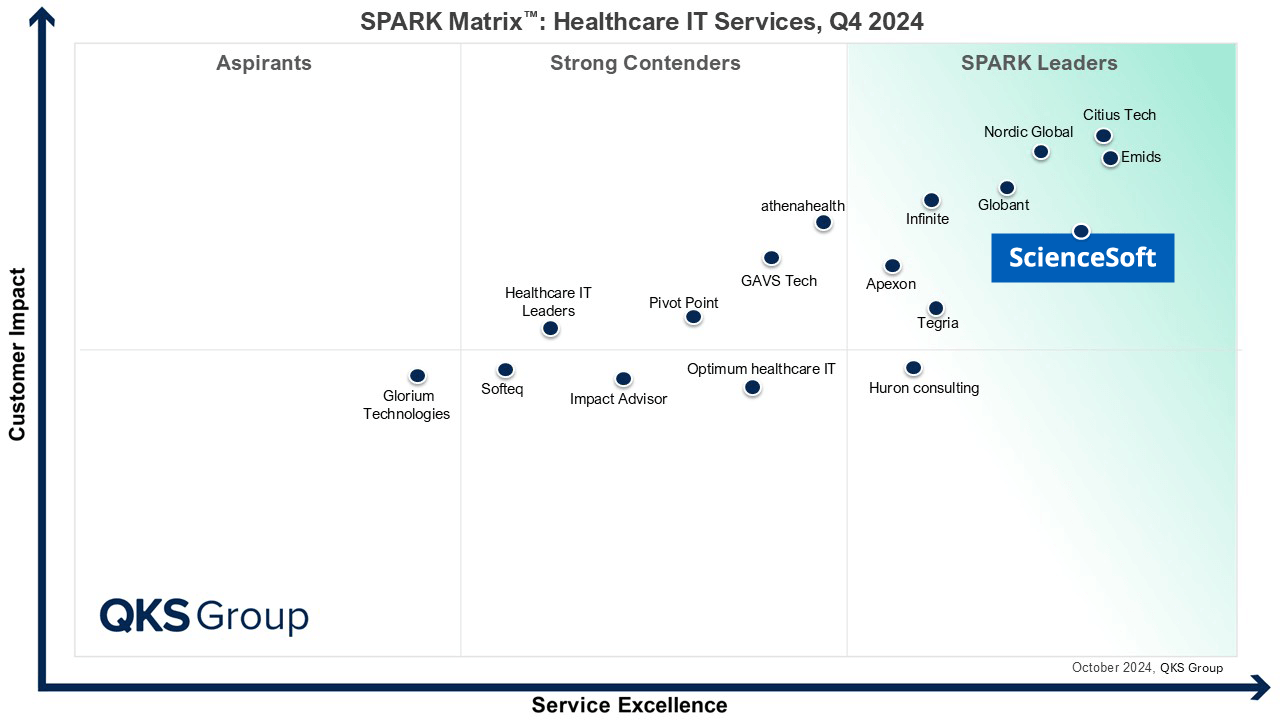
Featured among Healthcare IT Services Leaders in the 2022 and 2024 SPARK Matrix
Recognized for Healthcare Technology Leadership by Frost & Sullivan in 2023 and 2025
Named among America’s Fastest-Growing Companies by Financial Times, 4 years in a row
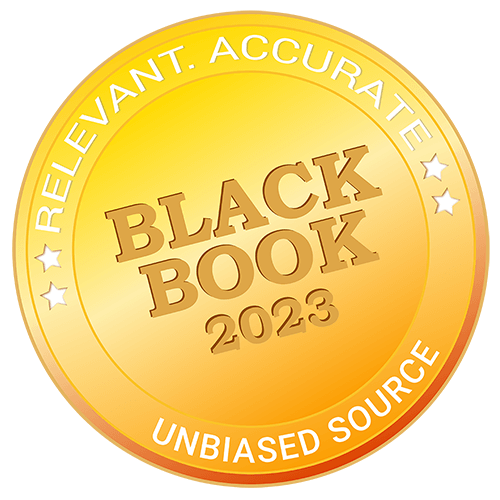
Top Healthcare IT Developer and Advisor by Black Book™ survey 2023
Recognized by Health Tech Newspaper awards for the third time (2022, 2023, 2025)
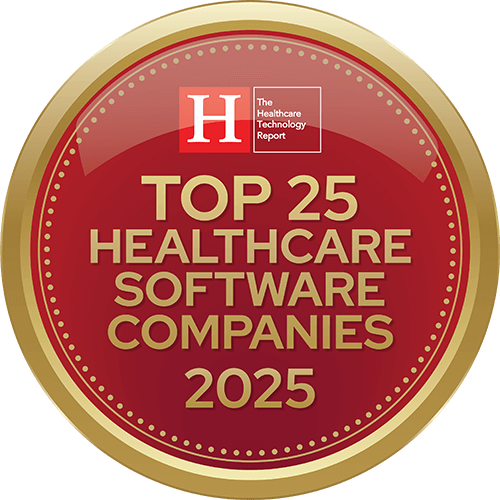
Named to The Healthcare Technology Report’s Top 25 Healthcare Software Companies of 2025
ISO 13485-certified quality management system
ISO 27001-certified security management system
Common Roles In Our Telehealth Project Teams
Project manager
Creates a telemedicine app project plan and supervises it, assigns tasks to the project team, monitors delivery timing and budget, mitigates risks (e.g., lack of resources or capabilities, delays), and ensures smooth communication within the team.
Business analyst
Elicits telemedicine software requirements, outlines features, tech limitations, defines necessary app integrations with other healthcare software (e.g., EMR, practice management software).
UX designer
Designs end-to-end user experiences and interactions with a telehealth app based on the UX research, creates wireframes and prototypes, tests telemedicine app usability.
UI designer
Designs an attractive visual interface of a telemedicine app.
Back-end developer
Builds the server side of a telehealth app.
Front-end developer
Creates the user side of a telehealth app.
Creates a test strategy, designs, executes, and maintains test cases according to it, reports telemedicine software defects.
Sets and maintains the telehealth application development infrastructure, automates telemedicine software development and delivery, monitors telehealth application security, performance, availability, etc.
Regulatory consultant
Advises on the software architecture components, optimal technologies, development process, and project documentation management to ensure HIPAA and HITECH compliance.
How ScienceSoft Ensures Safe and Secure Telehealth Apps
At ScienceSoft, we prioritize safety and security in every telehealth app we develop.
ISO-certified systems
With ISO 13485 for medical device quality management, ISO 9001 for general quality management systems, and ISO 27001 for information security management, we adhere to industry best practices and employ robust quality and security mechanisms throughout the development process.
Rigorous testing
We thoroughly test the functionality, security, and compliance of the telehealth apps we develop and evolve. This helps identify and rectify any potential vulnerabilities, ensuring a safe and secure user experience for patients and healthcare professionals.
Regulation compliance for uncompromised patient data protection
Our in-house compliance experts ensure that our telehealth solutions strictly comply with all the necessary healthcare regulations (e.g., HIPAA, HITECH, GDPR).
Cloud security at its best
Since 2012 in cloud infrastructures, we are proficient in cloud security measures and have a keen eye for potential risks.
Benefits of Telehealth App Development Outsourcing with ScienceSoft
Deep industry knowledge
With 19 years of hands-on experience in healthcare IT, we know your pains, speak the same language, and deliver solutions that drive tangible business outcomes.
A focus on business value
We design and implement only value-adding functionality. Your app won’t have fancy but unneeded features that just bloat the budget and evoke the users’ confusion.
Seamless integration
To ensure smooth data flows and enhanced workflow efficiency, our experts can connect your telehealth app with other healthcare IT systems, be they legacy or custom ones.
Telemedicine Drives Success of Healthcare Orgs
Florida-based Memorial Healthcare System implemented a multi-faceted virtual care program after receiving a funding of $974K following the onset of COVID-19 pandemic. Three years later, the system designed 61 telehealth programs, scheduled more than 400,000 online visits, and reached 97% patient satisfaction rate.
The Medical University of South Carolina Medical Center implemented a telemedicine program centered around behavioral health needs of pregnant and postpartum women. 80% of women joined the online screening program compared to 65% of women who agreed for in-person screening. Thus, telemedicine helped reduce the social stigma and detect pre- and post-natal behavioral health issues early.
Sutter Health in California offers primary care virtually and tries to resolve a patient’s issue via a video visit before scheduling an in-person appointment. After implementing the program, Sutter Health provides 90% of care services using telemedicine.
Massachusetts General Hospital (MGH) offers comprehensive telestroke and teleneurology programs to community hospitals. Now, over 95% of consultation requests are answered within five minutes. Clinicians in remote hospitals report that MGH neurologists’ consultations improve their decision-making and allow treating 71%–88% of telestroke patients locally.
Telemedicine App Development Costs
The development costs of a telehealth application typically range from $150,000 to $250,000+. The key cost drivers include:
- Type of a telemedicine application (web, mobile, desktop).
- For mobile telehealth apps: the number of supported platforms (iOS, Android).
- Number and complexity of features (e.g., adding remote patient monitoring functionality will highly influence the cost).
- Number of user roles (e.g., patients, doctors, administrators).
- Telehealth application performance requirements (e.g., an expected number of simultaneous appointments and sessions).
- Necessary data storage capacity.
- Number and complexity of integrations with relevant healthcare IT systems (e.g., EHR, practice management software, LIS).
- Telehealth software integration with remote patient monitoring devices.
- Scalability needs.
Here are sample costs for telehealth software development (excluding infrastructure costs):
From $150,000
For a full-fledged telehealth app with a basic feature set (audio and video calls, text messages, EHR integration, and manual tracking of symptoms, medication intake, vitals, etc.).
From $250,000
For a comprehensive solution featuring advanced functionality based on AI and machine learning.
Your investment is fully justified by the added value ScienceSoft provides. Here is what you can expect:
- Fast (within 2 days – 2 weeks) access to high-profile experts, including certified healthcare IT consultants, doctors of medicine, regulatory consultants, technical architects, developers, QA specialists, project managers, and business analysts.
- Readiness and capability to handle big, challenging projects.
- Absolutely unique code and full access to the source code documentation. No reusing of the code from earlier projects.
- 20-40% faster app release thanks to quality-first approach.
- 7-20% reduced cloud costs through cloud consumption optimization.
- Zero penalties thanks to robust security monitoring and 100% healthcare regulatory compliance.
- 1.5-3 times fewer software failures due to preventive monitoring.
About ScienceSoft
A US-based international healthcare IT powerhouse, ScienceSoft has been at the forefront of telemedicine since 2015, providing consulting, development, modernization, and support services. Our custom telehealth solutions empower such fields as pediatrics, physiotherapy, neurology, and more.

